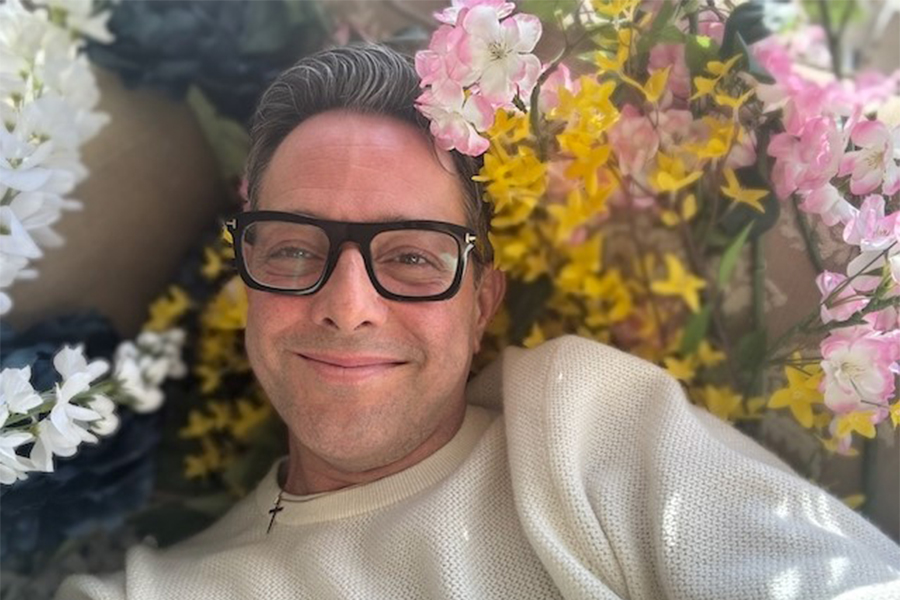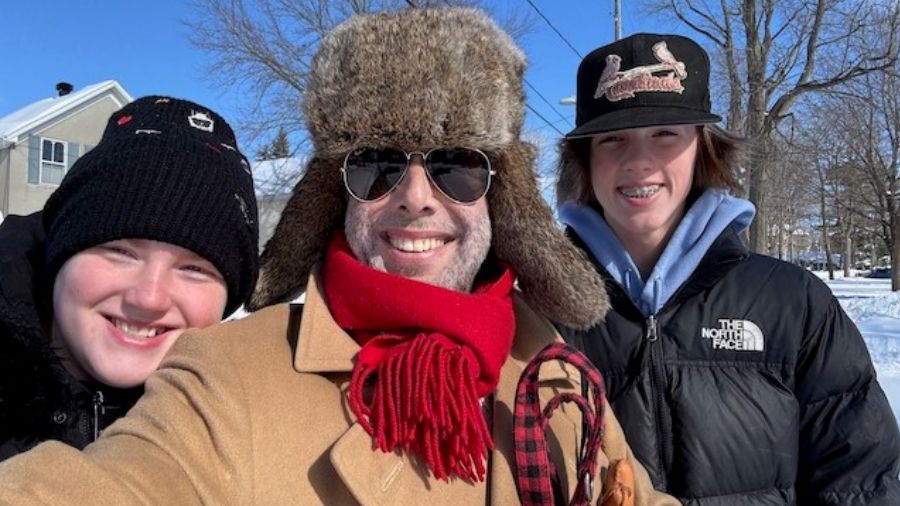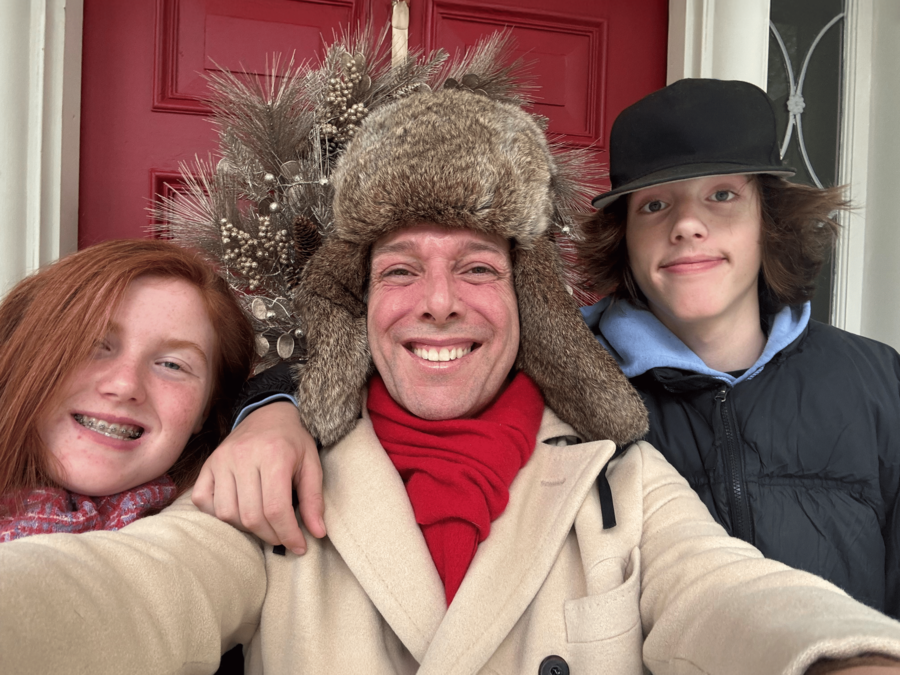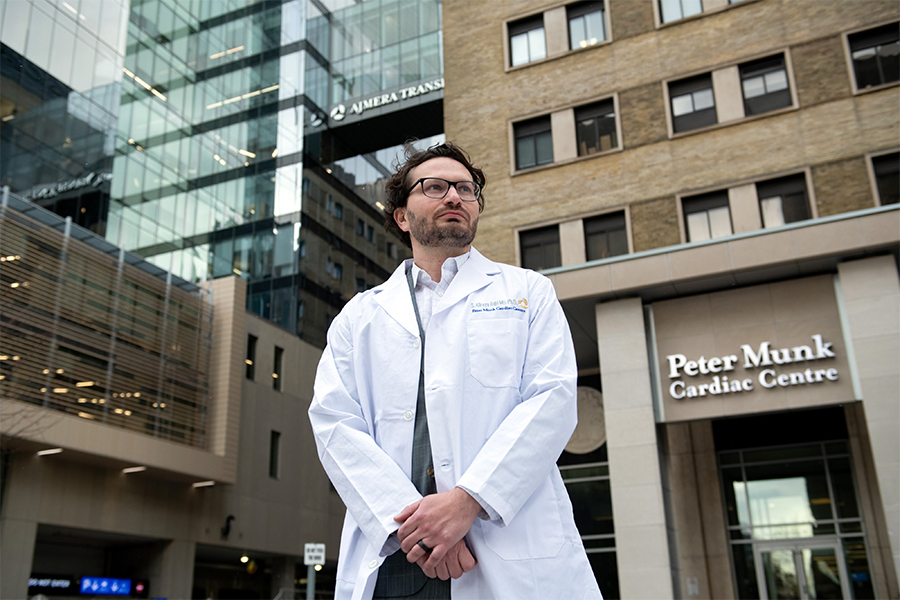
Gravely ill, James Scott Wilson thought of all the things he would miss.
His daughter’s beautiful hair. His son’s warm smile. The next 15 years as they grew into young adults.
But thanks to a deceased liver donation, none of that matters anymore. Scott, as he is known, will continue living to raise his children.
“I can still see the sun and have a glimmer in my eyes,” says Scott, 52, who received a liver transplant at UHN’s Toronto General Hospital earlier this year. “As a family, we have nothing to look back at and everything to look forward to.”
April is Be a Donor Month in Ontario. Supported by the Trillium Gift of Life Network, the goal is to raise awareness about the impact of organ donation in hopes of registering more candidates to be donors.
“Getting a transplant is like having a new birthday and starting life over,” says Dr. Deepali Kumar, Director of UHN’s Ajmera Transplant Centre.
“Patients have been sick for so long, then suddenly, they’re cured. The gratefulness of the miracle that has happened is not something patients ever forget.”
Every donor has the opportunity to be the miracle, she says.
Liver transplant waitlists in particular see higher mortality rates than other organs. According to the Canadian Institute for Health Information, 15 per cent of patients died while waiting for a liver in 2023. By comparison, three per cent passed while waiting for a kidney.
UHN is working hard to improve those numbers. Thanks in part to the forward-thinking generosity of our UHN Foundation supporters, we’re able to bring innovative treatments — like Ex Vivo perfusion machines, once used solely for research — into clinical use to assess and revive donor livers that might have otherwise been discarded.
Since its implementation in November of last year, Dr. Kumar says they’ve transplanted more than 20 livers that would not have been previously viable — and with excellent outcomes. In 2024 alone, UHN performed 209 procedures, a record in North America.
“We’re trying to increase our number of liver transplants because we still have a significant waitlist mortality,” she says. “With advanced technologies, we can repair and transplant more livers than ever before.”
But what we really need is for more people to register to be organ donors, she says.

Scott was initially diagnosed with compensated cirrhosis, the first stage of liver disease, in 2022. He did everything he could to prevent it from getting worse.
But by 2023, his condition progressed into decompensated cirrhosis — liver failure.
Scott needed a transplant to survive.
Adding to the challenge, Scott and his family were just starting to put their lives back together after the unexpected death of his husband several years prior.
“My children already lost one parent,” says Scott. “I couldn’t bear the thought of them losing another.”
Then began a difficult quest.
Living in the small town of Brockville, Ont., Scott made it his goal to find a living donor. While he was put on a transplant waitlist, most livers come from deceased donors. The wait can be much longer.
And Scott knew his time was limited. Liver donors are already less common than kidney donors. In the absence of life-saving treatments such as dialysis, liver failure patients tend to deteriorate much faster.
Scott’s sister initially came forward. Unfortunately, she wasn’t a match.
From reaching out to marketing agencies, to creating his own social media campaigns — and even an appearance on national daytime television — Scott tried his best to get the word out about his situation.
“I knew it wasn’t my time to die,” he says of the search for a donor.
“I’m a caretaker. I’m a family man. I’m a friend. I’m vital.”
After months of searching, Scott came up empty-handed. He was eventually hospitalized with fluid in his lungs, a symptom of end-stage liver disease.
“The most ideal time for a transplant is when a patient starts showing the first signs of liver failure,” says Dr. Leslie Lilly, Scott’s hepatologist at UHN.
But due to lengthy waitlist times and the lack of liver donors, only the sickest patients get priority.
Yet, it’s not uncommon for patients to get too ill while waiting, then turned down when the organ becomes available.
“It’s a delicate balance between being sick enough to get the transplant, but healthy enough to survive the procedure,” says Dr. Lilly.
While many patients can live long and healthy lives at the onset of liver disease, once that turns into liver failure — as it did with Scott — the odds become much grimmer.
Only then is a patient considered and put on the waitlist. And at that point, the donor organ may not come fast enough.
“It may be too late to save them,” says Dr. Lilly.

Patients with liver failure can live up to two years without a transplant.
Recognizing the need for more donors, UHN’s Centre for Living Organ Donation has recently started a social media self-promotion program. The goal is to show patients how to use social media as a platform to find a potential living donor, just as Scott did.
But with no success, Scott began preparing his children for life without parents.
He had all of his affairs in order leading up to his final hospitalization. He says the scariest part of all was not being around to see his children get older.
“I wasn’t afraid,” says Scott, emphasizing his strong Christian faith kept him grounded. “But it was the thought of not being able hug them anymore. Not being able to feel their warm embrace that got to me.”
When asked about his relentless efforts to find a donor, Scott says he didn’t just do it for himself, he did it for his kids.
“The whole point of having children is to carry on,” he says. “To have a legacy for them. To dream so they can have their own dreams, too.
“What’s the point of having anything in life if you can’t share it?”
Scott describes the day he got word a donor liver was available. He says he was lying on his deathbed, jaundiced and withering away, when he received the call. He was informed he would be getting a deceased liver transplant.
“It was the second most shocking phone call I ever got,” says Scott. The first was when he got the news that his husband had died of an unexpected medical emergency.
“I screamed from the bottom of my being,” he recalls. “It was primal.”
Within 24 hours, Scott was being wheeled into surgery at Toronto General Hospital, where he received his new life.
He says the transplant team was nothing short of amazing. The nurses, doctors and surgeon comforted him, listened to his perspective and ensured he had a seamless recovery.
Now, Scott says his goal is to educate, advocate and celebrate.
“Celebrate all the donors and recipients from before, all the transplants that lie ahead, and to educate those who may be unaware of the gift that organ donation is,” he says.
“To live can be your gift to give.”
More than anything, he wants people to look beyond “the nos” and to never give up until it’s truly time to give up.
As for what lies ahead for Scott and his children, he looks forward to giving back what he feels he took from them — time.
That includes gardening, traveling and attending his son’s baseball games without worrying about his blood sugar bottoming out.
“Old is the goal,” Scott says. “But it’s really quite simple, I just want to be.
“It’s time to experience the next chapter of who Scott was meant to be.”
Read more on James Scott Wilson’s Be A Donor page
Donor support is critical to helping UHN recruit the best medical talent, develop new treatments for disease, and maintain the excellence in patient care that give patients like Scott the chance to lead a full and active life.
By Shauna Mazenes

No one ever changed the world on their own but when the bright minds at UHN work together with donors we can redefine the world of health care together.


